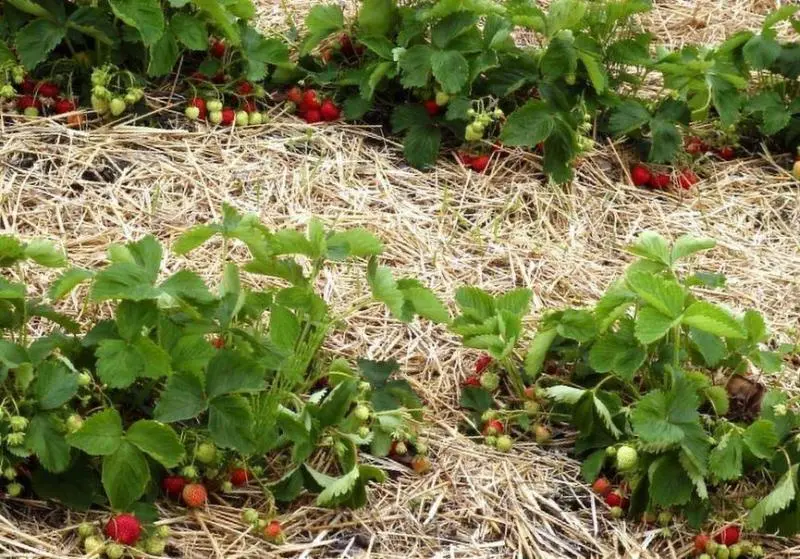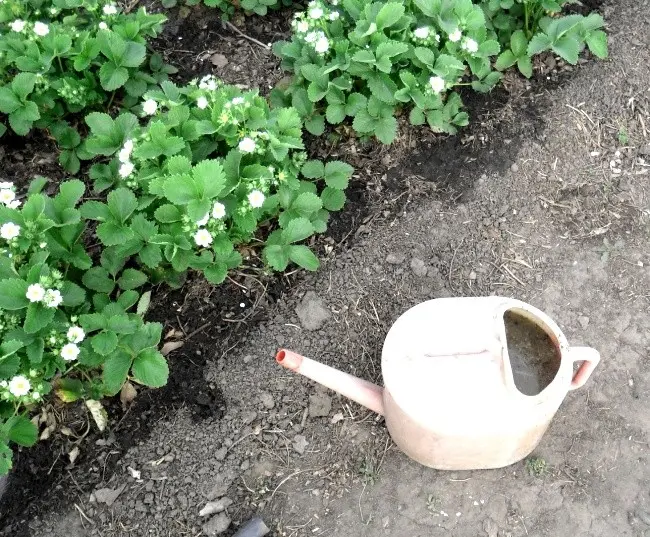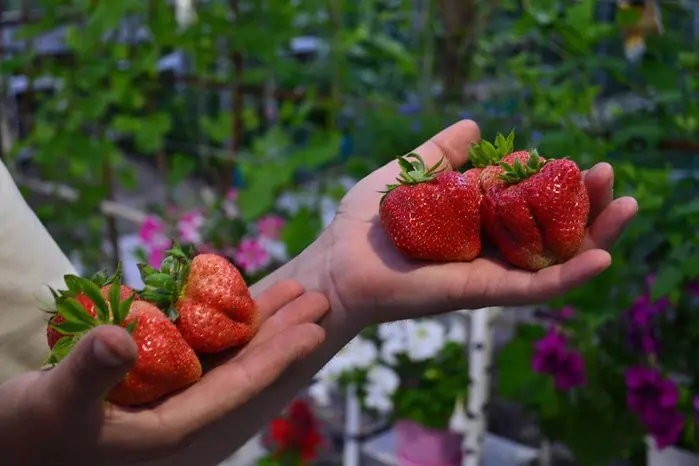Contents
Every gardener knows that a regular and rich harvest of strawberries, even with abundant watering, will only be with full plantation fertilizer. This berry is sensitive to feeding and reacts to a lack of nutrients with poor fruiting and slow development. Therefore, the question of how to feed strawberries in the spring does not lose its relevance.
Benefits of spring feeding
After a long winter period, a good feeding of strawberries is necessary. After the snow has melted, the soil has dried out a little, the bushes are freed from dry, old leaves and mustaches, and the root zone is loosened shallowly and the mulch layer is renewed. For the further development of the plant and fruiting, it is the spring feeding of strawberries that plays an important role. It allows you to speed up the vegetation process, get the plant out of hibernation and promotes the formation of new buds. However, top dressing of strawberries in the spring will give the greatest effect only if it is carried out on time and a sufficient, but not excessive amount of fertilizer is applied. Otherwise, the bushes will begin, as they say, to grow fat, their intensive growth and development will begin, while flowering and fruiting may be delayed for more than 6-15 days.

As a rule, the first spring top dressing is carried out in the last days of April – early May, when warm, dry weather sets in and at least 2-3 young leaves have blossomed on the bushes. To do this, dilute complex or organic fertilizers in a large amount of water and water the beds with a solution, making sure that it does not fall on the leaves. Re-feeding is carried out just before flowering. It affects not so much the amount of the crop, but the size and taste of the berries. The last, final spring feeding is carried out at the end of fruiting. It is very important because it affects the laying of flower buds for the next year’s harvest. At this time, they mainly fertilize with organic matter – humus or mullein in an increased amount. At the same time, nitrogen-containing fertilizers are not applied at all, or in a minimal amount. It should be ensured that the bushes are not completely covered with fertilizer, as this has a rather negative effect on the wintering of the plant.

What is the best way to feed?
Often, organic matter is used to fertilize plantations – humus, chicken manure, mullein, compost. These are the most economical additives and it is not possible to overfeed plants with them, since organic matter introduced in excess is simply not absorbed. Many have faced a situation where bushes, overfed with nitrates, develop intensively, without forming ovaries at all. However, one cannot count on the large sizes of berries, as with mineral fertilizers.
Humus and cow dung will provide plants with a full range of nutrients in the most digestible form. Aisles are recommended to be sown with siderites, this green fertilizer will not only protect strawberries from the scorching sun, pests and diseases, but also enrich the soil and improve its structure. Infusion of chicken manure is rich in nitrogen, gives the berries a rich color and large size. However, with an excess of it, the bushes can burn out, and the strawberries acquire a bitter aftertaste. Fermented milk products, in particular whey or curdled milk, are also used in combination with humus and chicken manure.

Additives of micro complexes and organic tinctures are effective. These are the so-called WMD or organo-mineral fertilizers. They reduce the need for chemical treatments by almost a third. Tank solutions are also made when preparations from pests of plant origin are added to the mixture of dressings. Mineral fertilizers are distinguished by their availability and ease of use. You can buy them in every gardening store or agricultural company. It is advisable to use complex additives containing 25-28% potassium salts, 6-8% phosphorus, 12-15% nitrogen and 0,3-0,6% magnesium. Detailed instructions for dilution and application of drugs are indicated on the package.

Foliar top dressing
You can feed strawberries not only by adding a nutrient solution under the bushes, but also in a foliar way, spraying the leaves and flowers of the plant. Foliar feeding of strawberries during flowering has a good effect on the fertilization process, improves the taste of berries, increases yield, increases the content of vitamin C and the percentage of sugar in fruits. In addition, such processing allows you to nourish the bush with the necessary trace elements in the shortest possible time. If a complex fertilizer is used to treat a plant, then for the first time it is applied to young leaves during the growing season, and subsequent times at the beginning and the flowering period and when the first ovaries appear.
The fertilizer is completely and almost instantly absorbed. Since elements such as phosphorus, nitrogen, magnesium, potassium are quite mobile, they easily move from the point of absorption from top to bottom. Thus, they move freely to where they are most needed – to young leaves, buds and roots. But iron, copper, manganese, calcium have low mobility. They are distributed mainly from below from the zone of impact upwards.

Four times spraying with a solution of boron during the flowering period has proven itself well. Since this process does not occur at once, spraying is repeated every 3-4 days so that the solution reaches all the flowers. Such processing not only significantly increases the number of ovaries, but also contributes to the enlargement of berries.
Video “How to properly fertilize strawberries”
This video tells how and what is the best way to feed strawberries.









